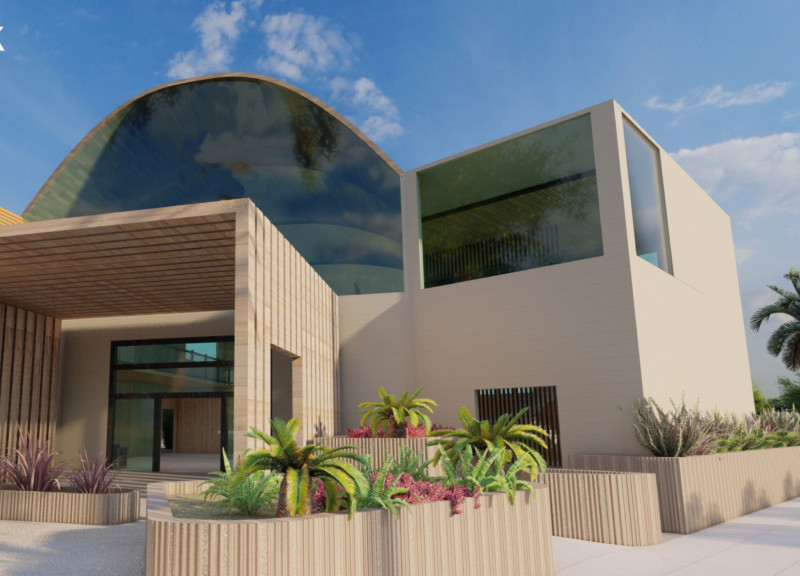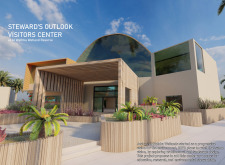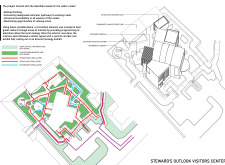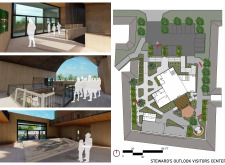5 key facts about this project
At its core, the project represents a melding of architecture and nature, reflecting a philosophy that prioritizes sustainability and community engagement. The structure’s form is inspired by the natural contours of the wetland area, embracing a curvilinear roof that contrasts with the more geometric structures nearby. This choice not only enhances skyline aesthetics but also reinforces the connection to the landscape, making the building feel like a continuation of its surroundings.
The Visitors Center is strategically designed to accommodate a variety of activities, making it a versatile space for visitors of all ages. The layout includes exhibition areas where guests can explore informational displays about the local ecosystem and its importance, alongside classrooms designed for workshops and educational programs. This multifunctional approach ensures that the center remains relevant to the community's needs, adapting to the diverse range of events that may take place.
Regarding its materiality, the Steward’s Outlook Visitors Center employs a combination of wood, concrete, and glass. The wood is used extensively in the façade and within interior spaces, creating a warm and inviting atmosphere that resonates with the natural environment. Concrete elements are vital for providing structural stability and longevity, while large glass openings facilitate natural light and create panoramic views of the wetland. This transparency not only enhances the visitor experience but also blurs the boundaries between indoor and outdoor spaces, promoting a sense of immersion in nature.
The planning of the Visitors Center pays close attention to circulation, incorporating pathways that guide visitors through the site while integrating seamlessly with the natural landscape. Well-considered pedestrian and vehicular access points ensure that the center is accessible to all, further promoting engagement with the reserve. These pathways are designed to navigate through integrated natural landscaping, encouraging exploration and interaction with the flora and fauna characteristic of the wetland area.
A key aspect of the unique design approach is its commitment to sustainable practices. The project takes initiative in utilizing low-water-use landscaping and selecting plant species that are indigenous to the area. These choices not only reduce the ecological footprint but also serve as educational tools, illustrating the importance of biodiversity and environmental stewardship.
The architectural design of the Steward’s Outlook Visitors Center not only serves its immediate function as an educational space but also reinforces the broader mission of the Al Wathba Wetland Reserve to conserve and protect its unique environment. The building embodies a harmonious relationship between architecture and ecology, demonstrating how thoughtful design can facilitate learning and community building. Visitors are encouraged to immerse themselves in the experience, exploring the architectural plans, sections, and designs that contribute to a comprehensive understanding of the project. For further insights into the architectural ideas and approaches incorporated into this exemplary project, readers are invited to engage with the detailed presentation and learn more about its features and impact within the context of environmental education and community engagement.


























